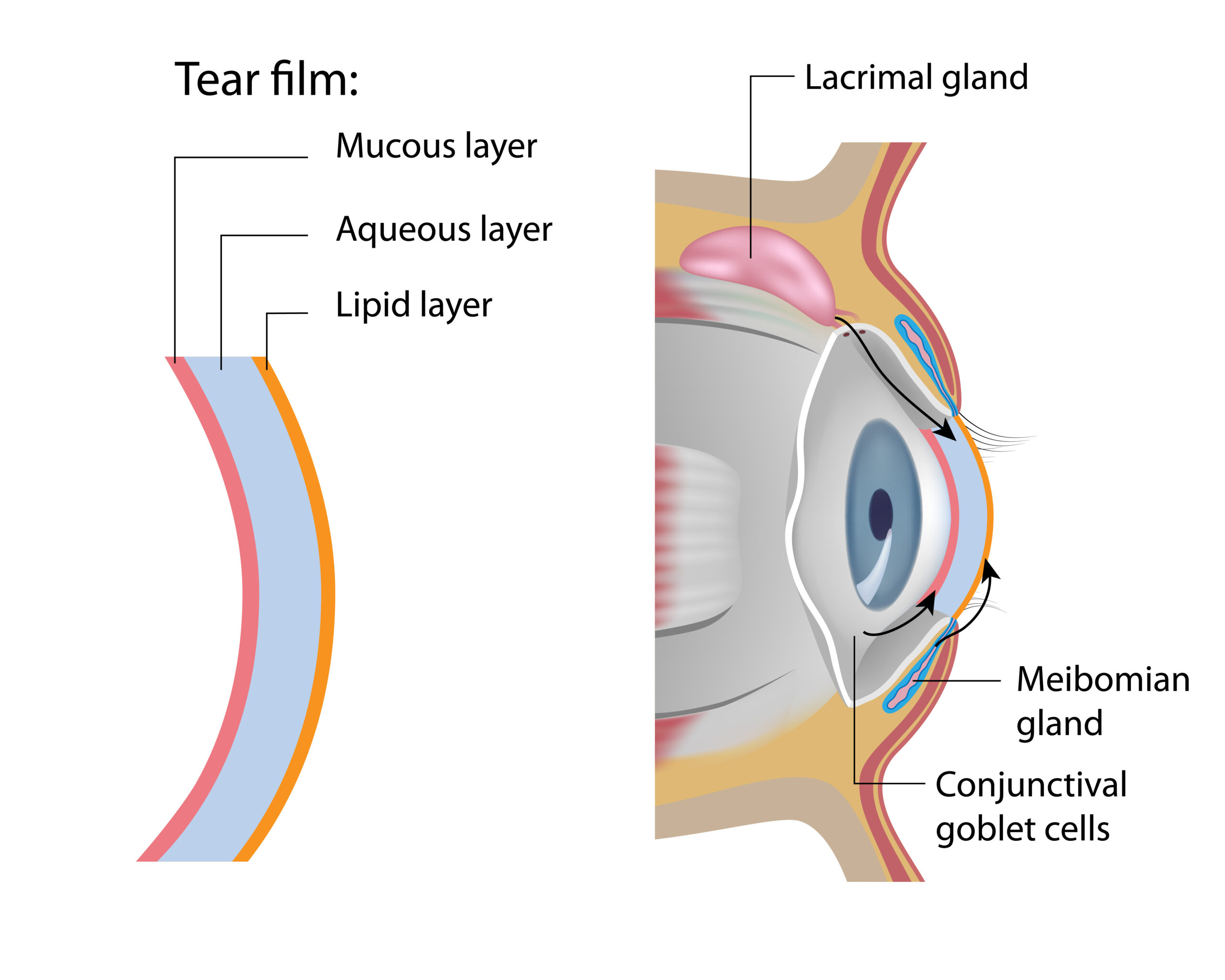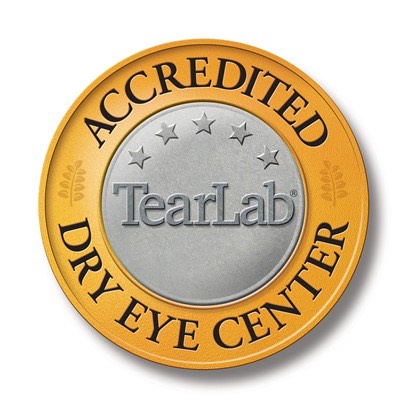
Tear Film
The tear film is structured with 3 layers that work together: a complex mucus component (mucin layer), a watery portion (aqueous layer), and a complex oil outer layer (lipid layer). The lipid layer is important for reducing evaporation of tears and also provides structure to the tear film. Oil is produced by the meibomian glands and is injected into the tears with each blink. Meibomian gland dysfunction (MGD) can create a deficiency in the lipid component of the tears, which leads to evaporative dry eye.
The watery component produced by the lacrimal glands (aqueous) is also important. A lack of aqueous production can result in another type of dry eye called aqueous deficient dry eye. Aqueous deficient dry eye can be detected by Tear Lab. It is often associated with disorders such as rheumatoid arthritis and lupus.
Tear Lab
Thomas Eye Center is an accredited Tear Lab Dry Eye Center certified for tear testing and specializing in dry eye disease care. We are recognized for our commitment to providing the highest level of patient care, using the most advanced diagnostic technology to improve the treatment and management of dry eye disease.
The tear lab is an objective and quantitative diagnostic test that provides precise and predictive information. The tear lab measures the osmolarity of tears to aid in the diagnosis of dry eye disease. Osmolarity is an important biomarker of ocular surface health.
Tear Lab is informative whether the numbers are abnormal or normal. Abnormal osmolarity is defined by an elevated reading greater than 300 mOsm/L, indicating loss of homeostasis OR when the inter-eye difference is greater than 8 mOsm/L, indicating instability of the tear film.
A patient that is symptomatic with normal tear osmolarity may not have dry eye disease, but may be diagnosed with allergic conjunctivitis, blepharitis, corneal dystrophy, contact lens intolerance, or other eye conditions.

